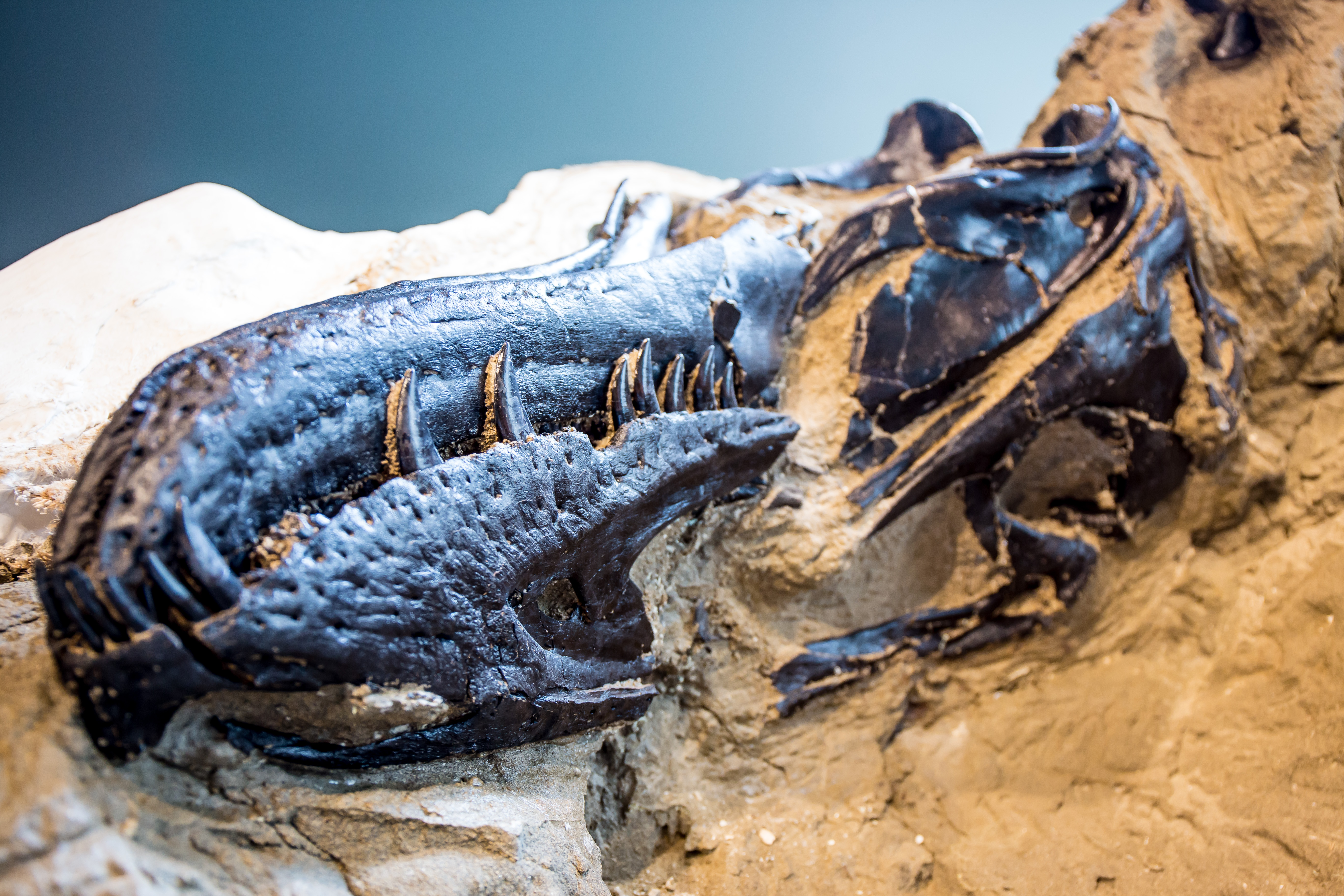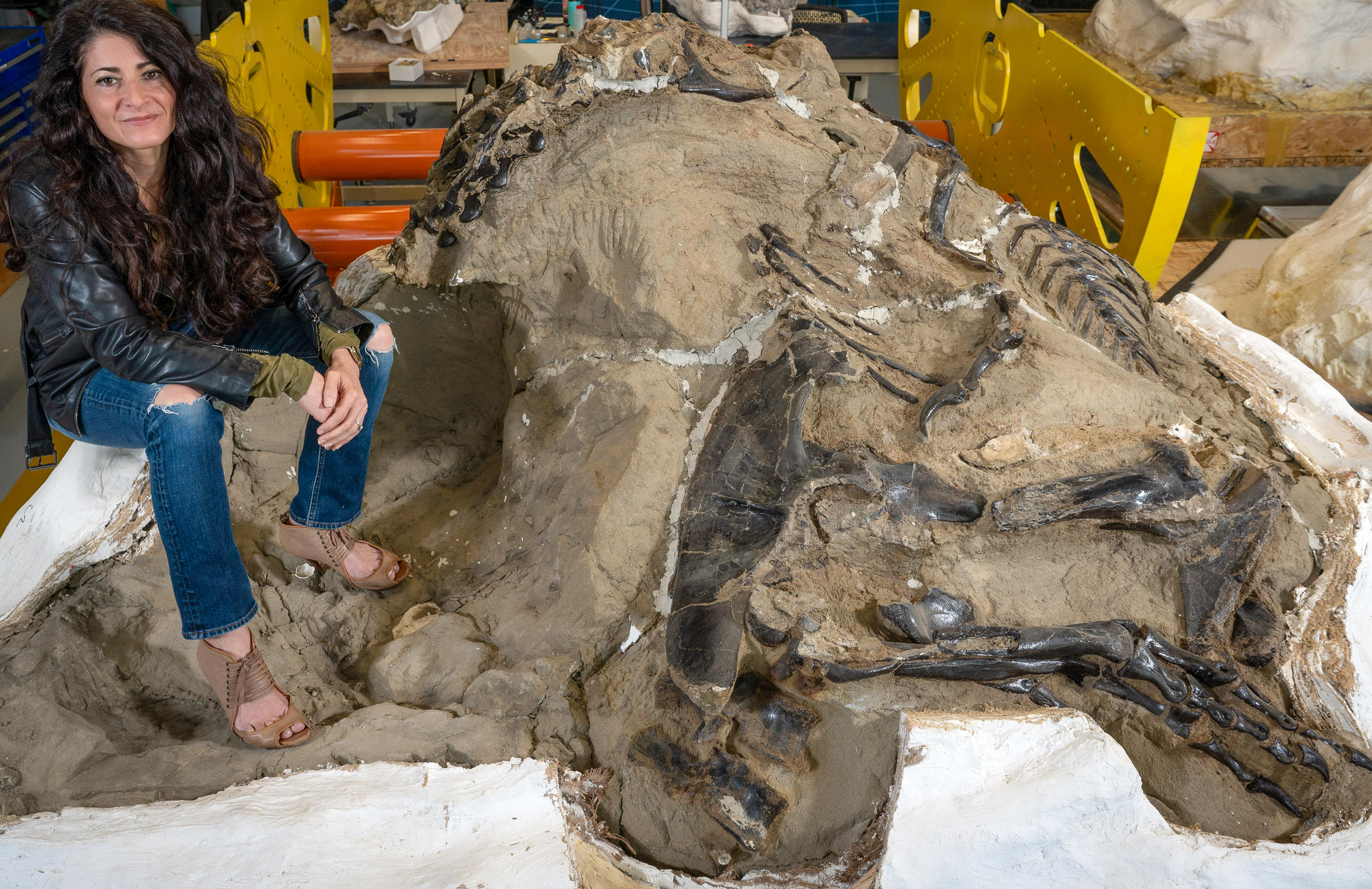Two paleontologists think they have settled a long-standing debate as to whether certain fossils from the very end of the Cretaceous represent a distinct species of small tyrannosaur, or juvenile T. rex, as many had assumed.
Their evidence relies on one of the pair of “Dueling Dinosaurs”, fossils that show a Triceratops fighting for its life with a small tyrannosaur. The duo claims the evidence is now clear enough to confirm the controversial genus, Nanotyrannus. Besides adding another dinosaur for enthusiasts to learn, the conclusion has implications for an even bigger dinosaur debate, about their evolutionary health before the asteroid/comet wiped them out.
Montana’s Hell Creek Formation is one of the richest and most studied sources of dinosaur fossils in the world. A skull collected there in 1942 has been a major topic of debate for decades. At 40 percent of a T. rex‘s length, it has features unknown from any recognized species other than T. rex, even closely related tyrannosaurs. This led many palaeontologists to decide they were looking at a baby T. rex, and reject the name Nanotyrannus lancensis that others had given it.
The original specimen has not proven capable of settling the debate, and both sides claim similarly sized tyrannosaur bones support their case.
However, among the many wonders of Hell Creek are a pair of reasonably complete 66.9-million-year-old fossils locked in mortal combat. The carnivorous side of this battle is too small to be a fully grown T. rex, but it was suspected of being a juvenile that got ahead of itself with its choice of prey. New analysis demonstrates that it instead closely resembles the skull that led to the proposal of N. lancensis as a new species. On the other hand, it has enough differences from T. rex that the baby giant hypothesis is much less plausible. Moreover, the bones show signs of being from a mature adult, not a juvenile.

A comparison of a fully grown Nanotyrannus lancensis and a T. rex. If these were juvenile T. rex, they’d still be quite young.
Image credit: North Carolina Museum of Natural Sciences
“This fossil doesn’t just settle the debate. It flips decades of T. rex research on its head,” said study co-author Dr Lindsay Zanno of North Carolina State University in a statement.
The dueling tyrannosaur had more teeth and fewer tail vertebrae than a T. rex, and – relative to body size – its forearms were longer than those that spawned a thousand cartoons. Even the locations of nerves in its skull can be identified, and they’re not where a T. rex’s would be. Moreover, growth rings and other features of the bones indicate the specimen was about 20 years old, by which time a T. rex really should have grown up.

The snout of Nanotyrannus.
Image credit: N.C.Museum of Natural Sciences
“For Nanotyrannus to be a juvenile T. rex, it would need to defy everything we know about vertebrate growth,” said co-author Dr James Napoli of Stony Brook University. “It’s not just unlikely – it’s impossible.” T. rex would need to have experienced an extended growth plateau in its late teens and early twenties, before growing rapidly again in a second puberty. For all the potential the idea of extra-surly T. rex might hold for science fiction scripts, the authors argue, “Such a trajectory would be wholly unique among archosaurs.”
The work doesn’t just confirm a new species and make us look at the Dueling Dinosaurs specimen in a new light; it could also force a rethink of models of T. rex’s growth. Juvenile T. rex specimens are hard to come by, and examples that may be reclassified as Nanotyrannus have been used heavily to estimate their lifecycle.

Dr Lindsay Zanno with the legendary “Dueling Dinosaurs” fossil containing dinosaur bones yet to be extracted.
Image credit: NC State University
On the way to this conclusion, Napoli and Zanno made what for others would be a career highlight on its own – the discovery of a different Tyrannosaurus species. They consider this so similar to N. lancensis that they have put it in the same genus and called it N. lethaeus. Not surprisingly, they’ve based this on yet another tyrannosaur specimen that was thought to be a juvenile T. rex based on its smaller size.
Although clearly a close relative of the most famous carnivorous dinosaur, Nanotyrannus must have branched off to fill a quite different evolutionary niche, possibly about 94 million years ago. Nanotyrannus’s prey may often have been too small to interest fully grown T. rex, but the authors suspect there was probably more competition with the actual juveniles, potentially leading the two to adopt different hunting strategies. Certainly, the work contradicts the idea that T. rex’s dominance left no room for mid-sized predators.
Nanotyrannus’ two members living at the same place and time represent a further indication of dinosaur diversity at the end of the Cretaceous, even in western North America. Along with a series of other recent discoveries, one announced just last week, this appears to refute the once-dominant belief that dinosaur diversity was declining at the end of the Cretaceous, and their dominance was in danger even without astronomical intervention.
“This discovery paints a richer, more competitive picture of the last days of the dinosaurs,” Zanno said. “With enormous size, a powerful bite force and stereoscopic vision, T. rex was a formidable predator, but it did not reign uncontested. Darting alongside was Nanotyrannus – a leaner, swifter and more agile hunter.” But not, it would seem, one smart enough to know not to tackle triceratops.
The study is published in Nature.
Source Link: Tiny Triceratops-Tackling Tyrannosaur Was Its Own Species, Not A Baby T. Rex